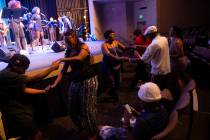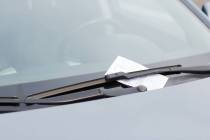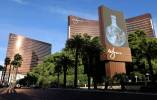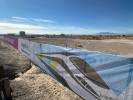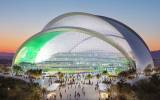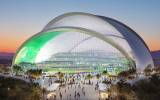School Board feelin’ mighty greedy
Frustrated sales workers, rejoice. You no longer have the hardest sell in town. The new front-runner for the most ridiculous, laughable, are-you-kidding-me pitch in Nevada? The Clark County School District.
School Board trustees decided Thursday night to begin the process of placing on the November ballot a property tax increase that would generate $5.3 billion over 10 years. They're prepared to ask voters to give them the money -- about $100 per year for a typical homeowner -- for construction projects, renovations, maintenance and new equipment.
For a district with declining enrollment. For a district that recently finished the most aggressive new-school construction and renovation campaign the country has ever seen. For a district that serves one of the most distressed housing and job markets in America.
And during an election season in which voters could be asked to support up to five other plans to raise taxes.
Good luck with that. Trustees have a better chance of selling an AMC Gremlin at a classic car show.
How much is $5.3 billion? Steve Wynn didn't spend that much to build the Wynn Las Vegas and Encore resorts on the Strip. It's almost enough money to fund all state government operations -- not just K-12, but higher education, prisons, welfare programs and every other agency -- for two years.
For $5.3 billion, the Nevada Department of Transportation could finish nearly every major highway expansion project that's on the drawing board for Southern Nevada. For $5.3 billion, you could pay the entire construction bill for McCarran International Airport's monstrous Terminal 3 project, the M Resort and The Cosmopolitan.
$5.3 billion? Seriously?
Movie villain Dr. Evil would be embarrassed to shake down the free world for half as much.
Where would all the money go? For starters, nine new elementary schools would be built to provide relief at the district's most crowded campuses, thereby getting more than 7,000 kids out of portable classrooms. Nine other schools would be completely replaced. That would cost about a half-billion dollars. Only $4.8 billion to go!
Some $1.6 billion would be spent on technology and equipment. Of course, older facilities (and by old, I mean a school that was built 20 years ago) would get more money than newer ones, but that still averages out to $4.5 million per campus, leaving about $3.2 billion in the slush fund.
That money is for major renovations such a new roofs, new air-conditioning systems and new electrical and plumbing, among other improvements -- an average of $9 million for each of the district's 357 schools.
How far does $9 million go? For heaven's sake, the UNLV basketball team's new practice facility, the massive Mendenhall Center, cost only $13 million!
Are they lining up Pentagon contractors for the work, or what? The numbers make no sense, especially when you consider that charter schools somehow get by with zero public funding for facilities.
Superintendent Dwight Jones insisted last week that the money is not a wish list for Santa Claus, but the "reality of an immediate need."
In reality, a good chunk of this money is dedicated to creating a perceived equality of environment: Because so many students get to sit in classrooms in newer schools, the argument goes, it's unfair for other students to be forced to sit in older buildings or portables. Never mind that at many of the district's older schools, in the valley's urban core, the system spends much more operating revenue, on a per-student basis, than it does at newer, suburban campuses.
News flash: Kids don't flunk because they attend an old schoolhouse. If that were the case, the entire East Coast would be in the achievement basement.
But the School Board can't do anything about the taxes that feed the state's general fund. That's up to the Legislature. Or the public, through the initiative process.
And it promises to be a busy initiative season. Already, one has been filed with the secretary of state to raise the gaming tax rate on large casinos from 6.75 percent to 9 percent. Another one targets the mining industry. The Nevada AFL-CIO is expected to petition to create a new business margin tax. (A proposal to raise the sales tax rate in the resort corridor to fund a state-of-the-art arena already has qualified for November's ballot.) The squeeze is on.
Southern Nevada voters traditionally have supported tax increases that are directed to a specific purpose, if they can be convinced of the need. They've supported previous school district construction bonds. But those were put before voters in times of record growth, not during a prolonged recession.
A handful of aging campuses do indeed need to be replaced. Several others need major renovations. The school district, like most every other enterprise in the valley, is making fiscal sacrifices, and if some maintenance work is delayed too long, it will lead to more expensive repairs down the road.
But the School Board is not lobbying lawmakers for a dollar figure that can be adjusted on the fly to gain the number of votes needed for passage. Once trustees make the commitment to place their plan on the ballot, it's an all-or-nothing proposition. If they ask for too much -- and they sure as heck are right now -- voters won't consider their arguments for a second.
The School Board has to do a better job of prioritizing. If trustees try to make the case that they have $5.3 billion worth of critical, equally important construction and equipment needs, then they've lost this issue already. In a region where the average campus is just 22 years old, no one's buying it.
Glenn Cook (gcook@reviewjournal.com) is a Review-Journal editorial writer.








